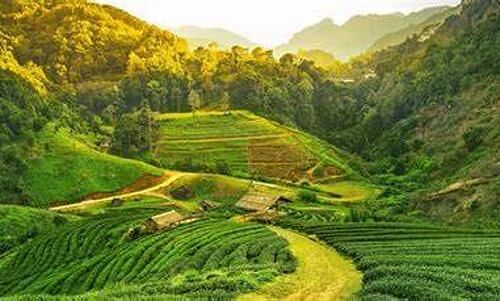The United Nations World Tourism Organization (UNWTO) emphasizes on harnessing tourism’s benefits for achieving the Sustainable Development Goals. The global tourism body is of the view that tourism development relies on good public and privately-supplied infrastructure and innovative environment. The Assam Tourism Policy, 2022 approved by the state cabinet, which seeks to develop infrastructure at places of tourist interest in collaboration with private sector and local communities, is in synchronization with the UNTWO’s approach.
A robust intermodal transport connectivity and quality highways and roads along the tourist circuits are a must for investment in the proposed infrastructure to help achieve the desired objectives. The dilapidated condition of National Highways and state roads and lack of robust public and private transport connectivity to most tourist destinations, however, point towards tourism promotion initiatives of the government in the state lacking focus. The new policy to address this gap is critical to removing the bottlenecks.
The UNWTO believes that tourism sector can incentivize national governments to upgrade their infrastructure and retrofit their industries, making them more sustainable, resource-efficient and clean, as a means to attract tourists and other sources of foreign investment which can facilitate further sustainable industrialization, which is necessary for economic growth, development and innovation. The proposal to develop iconic bungalows in 50 identified tea gardens in the state close to existing tourism circuits in public-private partnership mode is expected to provide a boost to individual initiatives to promote tea tourism. Under this policy, already included in the State Budget for 2022-23, the government will contribute its share of 50% (up to a maximum of Rs 2 crore) for each infrastructure project looks attractive for the industry to make use of historic tea garden bungalows to attract high-end domestic and foreign tourists.
Improved road, railway and air connectivity to these destinations can boost arrival of foreign tourists with some of these tea gardens being located close to iconic destinations like Kaziranga National Park, Majuli river-island and other major tourist spots in the Northeast region. The policy seeks to create Special Tourism Zones by promoting tea tourism, golf tourism, medical and wellness, adventure along with the exciting wildlife and heritage circuits. Articulating and developing innovative tourism products to meet the demand of new-age tourists – and priorities not limited to visiting a destination but also gaining deeper insight about the place and life around it – can help create a buzz about the new policy.
Combining the government support for developing home stays proposed in the policy document with innovative tourism products like demonstration of local cultural practices, such as agricultural practices, traditional handloom and textile activities, can bring tourists and backpackers to destinations even outside the identified circuits and far away from iconic destinations. Anchoring the new policy with the ‘Act East’ and ‘Neighbourhood First’ policies of the Central government can help the tourism industry in the state to focus its attention in the neighbourhood to attract more tourists from ASEAN and South Asian countries. Ironically, the region lacks direct air connectivity and promotion of more people-to-people exchange can fuel demand for more air tickets and prompt private airliners to operate direct flights between the Northeast region and neighbouring countries.
Delay in key transborder connectivity projects like the Kaladan multimodal project, trilateral highway project, trans-Asian railway and Agartala-Akhaura rail project have compelled the tourism industry in Assam and other states in the region to depend more on domestic tourists and foreign tourists mostly from European countries. Assam taking the lead in impressing upon the Central government to expedite these transborder connectivity projects can supplement the new policy goals. Official data show that the number of tourists from South Asia to India increased to over three million, about 2.
2 million from Bangladesh alone, and from Southeast Asia the number increases to about nine lakhs. Prior to the Covid-19 pandemic, growth of domestic tourists in Assam declined while arrival of foreign tourists registered significant rise, but travel restrictions in most countries prompted a significant number of domestic tourists to opt for destinations in Assam and other states in the region, which has brought huge opportunities for the Assam Tourism Department to aggressively push its brand promotion to attract more domestic and foreign tourists. The framework of the new policy will be put to test if it is going to make tourists destinations more attractive as envisaged, to motivate domestic tourists to return and spread the word about the uniqueness of destinations, nature and environment, people and life in the state and rest of the Northeast, which make the destinations and places around worth visiting.
Unlocking the tourism potential in the state can create huge employment and livelihood opportunities along the entire value chain. Adopting a new tourism policy is a pragmatic move, but the challenges are enormous. A holistic approach will help create a new ecosystem needed for achieving the policy goals.
.
From: sentinel
URL: https://www.sentinelassam.com/editorial/tapping-assams-tourism-potential-605113



